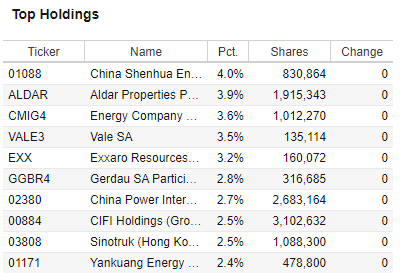
If you're a beginner, you might have trouble navigating the basic concepts and terminology of forex trading. Start by signing up for a demo and watching Rayner Teo's YouTube videos. This will allow you to begin learning about leverage and how to trade on a trading platform. This article will cover how to register for a demo and the basics about leverage.
Signing up for a demo account
There are two reasons why you should register for a demo account before trading forex. First, you want to be able to practice managing your money and making virtual profits before you start trading on a live account. You should practice any new trading strategies before investing in real money. Both experienced traders and novice traders will need to do this. Demo accounts are a great way for you to practice the system and find any pitfalls.

Rayner Teo YouTube channel: Learning from Rayner
Beginners in Forex trading should begin by understanding the terminology and indicators. Investopedia offers more information on trading. These websites also provide videos of helpful trading concepts. Follow a Forex trader on YouTube to learn more about forex.
A trading platform
There are many things to take into consideration when selecting a trading platform. Because it allows you set automatic stop limits as well as guaranteed stop losses, a trading terminal is essential. A trailing stop is also available on some trading platforms. This allows you to set your stop limit and adjust it as the market fluctuates. This locks in your profits while minimising your losses. You can trade more effectively with an advanced indicator such as a "renko chart".
Leverage
Forex traders can leverage high amounts to increase their profit potential. Leverage can range from one to five hundred times the amount of your initial capital. Forex brokers often offer free trading. The commission for trading in currency futures is not included in forex brokers' fees. Leverage for futures trading generally is lower than forex. Forex trading leverage is expressed as a percentage.
Points in Percentage
There are two basic units of measurement in foreign exchange trading - Points in Percentage in point. Points are the smallest increment of change in currency price, and represent 0.0001 of a percent. This would be one tenth point for most currency pairs. If you do this, your currency pair would be worth one hundred pips. The difference between a Canadian and US Dollar is one percent, or 0.0001.

Currency pairs
To trade one currency against another, currency pairs can be used. To calculate the price for a currency pair, you take the exchange rate of one currency and convert it into the amount of your quoted currency. If the EUR/USD price changes from $1.12925-1.12935, one pip is transferred. Although technically, you can trade any currency in the world, you will be limited to trading the currencies offered by your Forex broker.
FAQ
How can someone lose money in stock markets?
Stock market is not a place to make money buying high and selling low. It is a place where you can make money by selling high and buying low.
The stock market is for those who are willing to take chances. They may buy stocks at lower prices than they actually are and sell them at higher levels.
They want to profit from the market's ups and downs. They might lose everything if they don’t pay attention.
What is the difference in a broker and financial advisor?
Brokers help individuals and businesses purchase and sell securities. They take care all of the paperwork.
Financial advisors have a wealth of knowledge in the area of personal finances. They can help clients plan for retirement, prepare to handle emergencies, and set financial goals.
Banks, insurers and other institutions can employ financial advisors. Or they may work independently as fee-only professionals.
You should take classes in marketing, finance, and accounting if you are interested in a career in financial services. Additionally, you will need to be familiar with the different types and investment options available.
Are stocks a marketable security?
Stock is an investment vehicle where you can buy shares of companies to make money. This is done through a brokerage that sells stocks and bonds.
You can also invest in mutual funds or individual stocks. There are more than 50 000 mutual fund options.
The difference between these two options is how you make your money. With direct investment, you earn income from dividends paid by the company, while with stock trading, you actually trade stocks or bonds in order to profit.
Both cases mean that you are buying ownership of a company or business. You become a shareholder when you purchase a share of a company and you receive dividends based upon how much it earns.
Stock trading allows you to either short-sell or borrow stock in the hope that its price will drop below your cost. Or you can hold on to the stock long-term, hoping it increases in value.
There are three types for stock trades. They are called, put and exchange-traded. Call and Put options give you the ability to buy or trade a particular stock at a given price and within a defined time. ETFs are similar to mutual funds, except that they track a group of stocks and not individual securities.
Stock trading is very popular as it allows investors to take part in the company's growth without being involved with day-to-day operations.
Stock trading can be very rewarding, even though it requires a lot planning and careful study. If you decide to pursue this career path, you'll need to learn the basics of finance, accounting, and economics.
What are the benefits to investing through a mutual funds?
-
Low cost - Buying shares directly from a company can be expensive. A mutual fund can be cheaper than buying shares directly.
-
Diversification: Most mutual funds have a wide range of securities. The value of one security type will drop, while the value of others will rise.
-
Management by professionals - professional managers ensure that the fund is only investing in securities that meet its objectives.
-
Liquidity- Mutual funds give you instant access to cash. You can withdraw the money whenever and wherever you want.
-
Tax efficiency – mutual funds are tax efficient. You don't need to worry about capital gains and losses until you sell your shares.
-
No transaction costs - no commissions are charged for buying and selling shares.
-
Mutual funds are easy-to-use - they're simple to invest in. All you need is money and a bank card.
-
Flexibility - you can change your holdings as often as possible without incurring additional fees.
-
Access to information- You can find out all about the fund and what it is doing.
-
Investment advice - you can ask questions and get answers from the fund manager.
-
Security - you know exactly what kind of security you are holding.
-
Control - You can have full control over the investment decisions made by the fund.
-
Portfolio tracking – You can track the performance and evolution of your portfolio over time.
-
Easy withdrawal: You can easily withdraw funds.
Disadvantages of investing through mutual funds:
-
Limited investment options - Not all possible investment opportunities are available in a mutual fund.
-
High expense ratio – Brokerage fees, administrative charges and operating costs are just a few of the expenses you will pay for owning a portion of a mutual trust fund. These expenses eat into your returns.
-
Lack of liquidity - many mutual funds do not accept deposits. These mutual funds must be purchased using cash. This restricts the amount you can invest.
-
Poor customer service - There is no single point where customers can complain about mutual funds. Instead, you should deal with brokers and administrators, as well as the salespeople.
-
Risky - if the fund becomes insolvent, you could lose everything.
What is security in a stock?
Security refers to an investment instrument whose price is dependent on another company. It may be issued by a corporation (e.g., shares), government (e.g., bonds), or other entity (e.g., preferred stocks). The issuer promises to pay dividends and repay debt obligations to creditors. Investors may also be entitled to capital return if the value of the underlying asset falls.
What is a REIT?
An entity called a real estate investment trust (REIT), is one that holds income-producing properties like apartment buildings, shopping centers and office buildings. These companies are publicly traded and pay dividends to shareholders, instead of paying corporate tax.
They are similar companies, but they own only property and do not manufacture goods.
Statistics
- US resident who opens a new IBKR Pro individual or joint account receives a 0.25% rate reduction on margin loans. (nerdwallet.com)
- Ratchet down that 10% if you don't yet have a healthy emergency fund and 10% to 15% of your income funneled into a retirement savings account. (nerdwallet.com)
- For instance, an individual or entity that owns 100,000 shares of a company with one million outstanding shares would have a 10% ownership stake. (investopedia.com)
- Our focus on Main Street investors reflects the fact that American households own $38 trillion worth of equities, more than 59 percent of the U.S. equity market either directly or indirectly through mutual funds, retirement accounts, and other investments. (sec.gov)
External Links
How To
How to Invest in Stock Market Online
Stock investing is one way to make money on the stock market. You can do this in many ways, including through mutual funds, ETFs, hedge funds and exchange-traded funds (ETFs). The best investment strategy depends on your risk tolerance, financial goals, personal investment style, and overall knowledge of the markets.
First, you need to understand how the stock exchange works in order to succeed. This includes understanding the different investment options, their risks and the potential benefits. Once you've decided what you want out your investment portfolio, you can begin looking at which type would be most effective for you.
There are three main types of investments: equity and fixed income. Equity is the ownership of shares in companies. Fixed income refers debt instruments like bonds, treasury bill and other securities. Alternatives are commodities, real estate, private capital, and venture capital. Each category has its own pros and cons, so it's up to you to decide which one is right for you.
Once you have determined the type and amount of investment you are looking for, there are two basic strategies you can choose from. The first is "buy and keep." This means that you buy a certain amount of security and then you hold it for a set period of time. The second strategy is "diversification". Diversification means buying securities from different classes. If you buy 10% each of Apple, Microsoft and General Motors, then you can diversify into three different industries. You can get more exposure to different sectors of the economy by buying multiple types of investments. You are able to shield yourself from losses in one sector by continuing to own an investment in another.
Risk management is another crucial factor in selecting an investment. Risk management can help you control volatility in your portfolio. A low-risk fund would be the best option for you if you only want to take on a 1 percent risk. You could, however, choose a higher risk fund if you are willing to take on a 5% chance.
Your money management skills are the last step to becoming a successful investment investor. Planning for the future is key to managing your money. A good plan should include your short-term, medium and long-term goals. Retirement planning is also included. Sticking to your plan is key! Do not let market fluctuations distract you. Stick to your plan and watch your wealth grow.